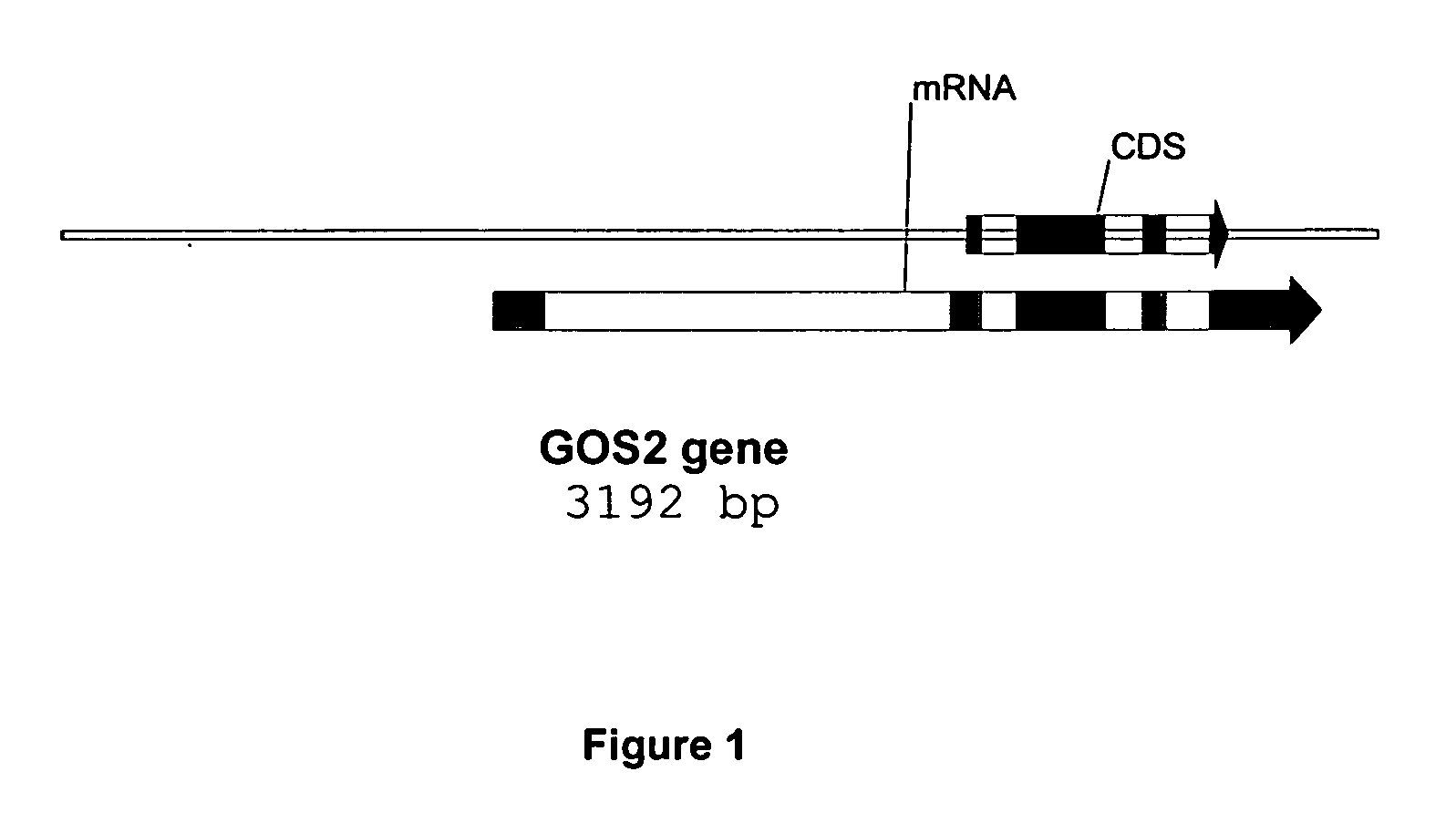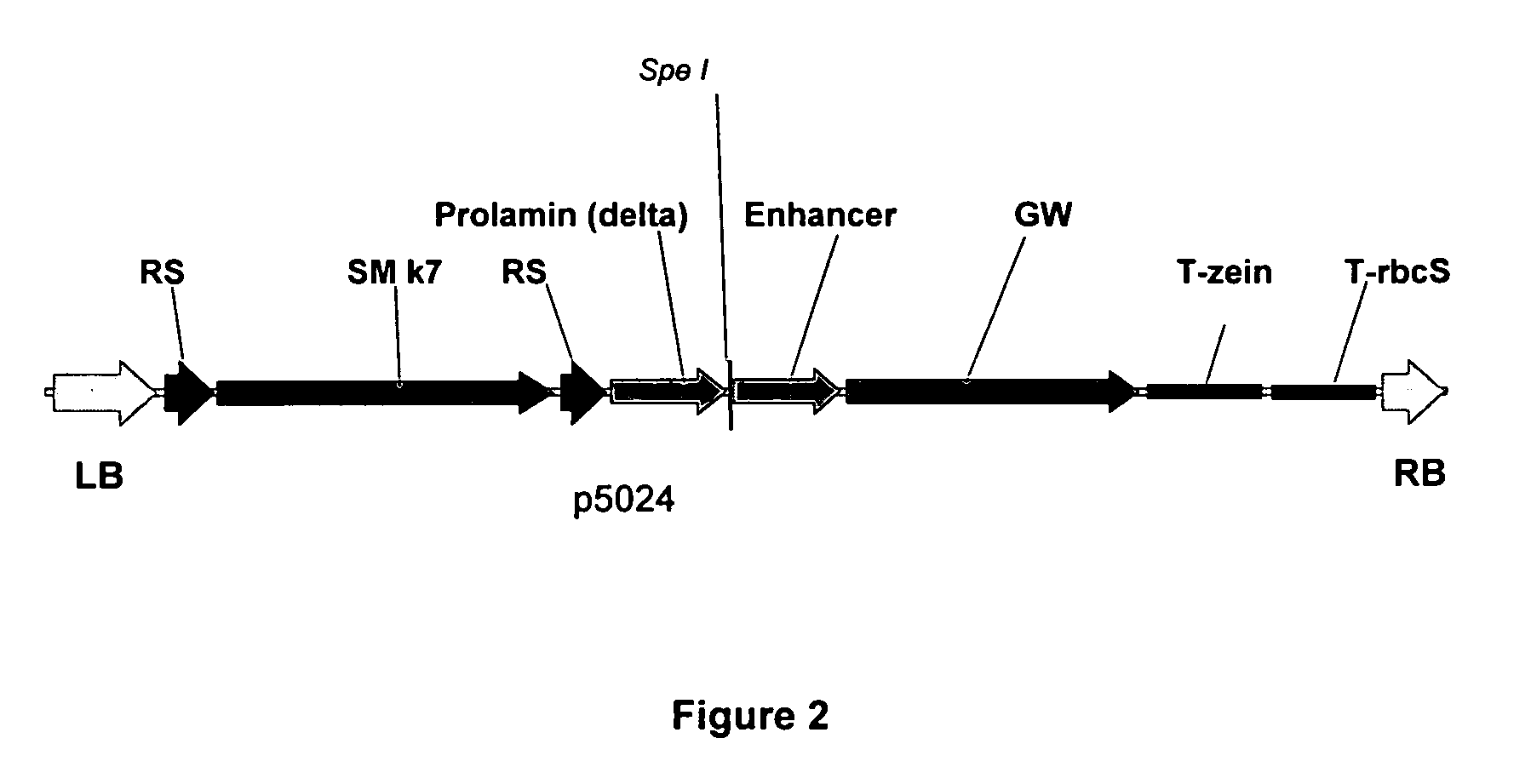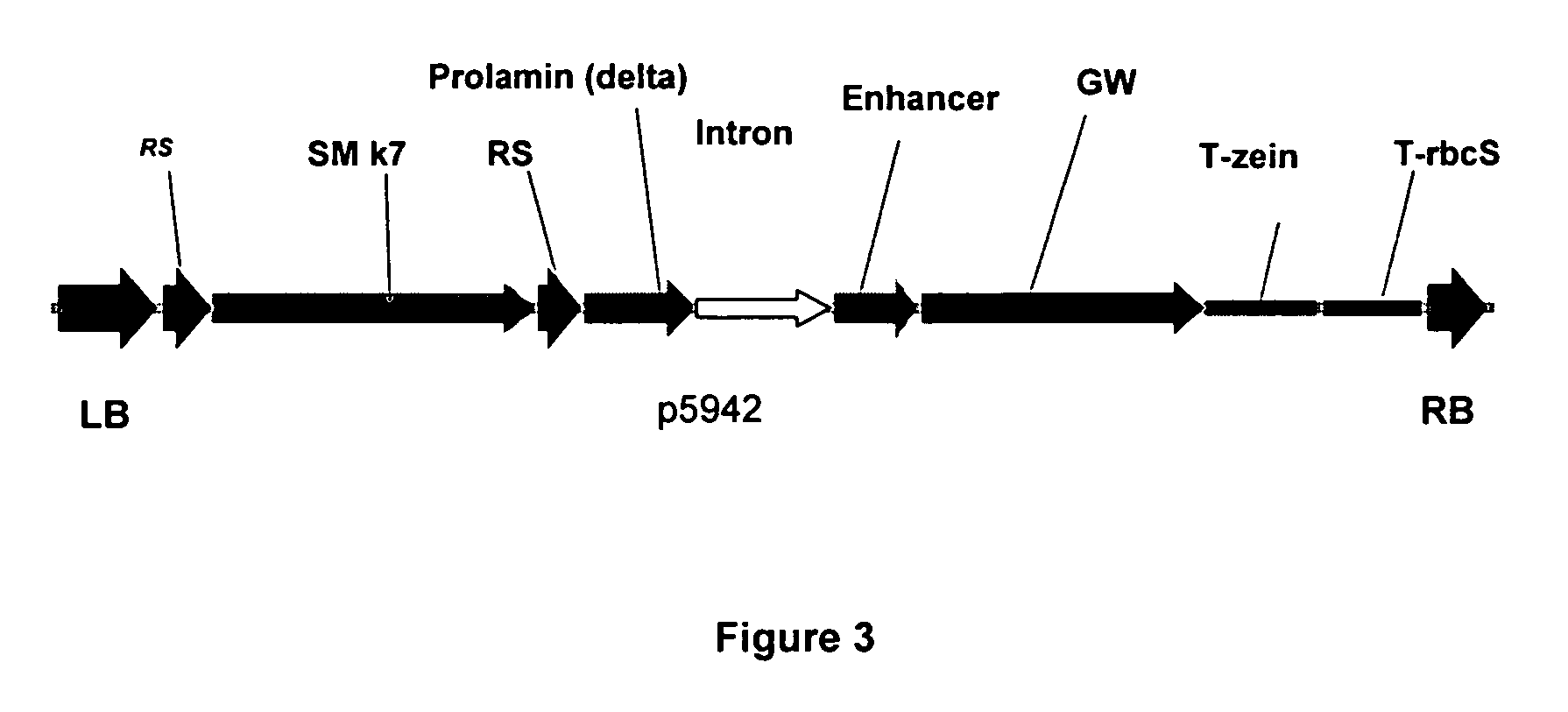Method for increasing transgene expression
a transgene and expression method technology, applied in the field of increasing transgene expression in plants, can solve the problems of lack of strength to ensure high expression levels, insufficient intron splicing to enhance mrna accumulation, and insufficient in efficient transcript splicing, so as to achieve the effect of increasing transgene expression in a transgenic plan
- Summary
- Abstract
- Description
- Claims
- Application Information
AI Technical Summary
Benefits of technology
Problems solved by technology
Method used
Image
Examples
example 1
Genetic Constructs
[0076] A modified T-DNA (p5024) was created comprising within its borders the elements as shown in FIG. 2. Next the first intron of the rice GOS2 gene was inserted in the restriction site SpeI (FIG. 3). Finally, the GW cassette was replaced by the GUS gene using a GW LR reaction, resulting in the plasmids p06192 and p06193 (FIG. 4).
example 2
Rice Transformation
[0077] Mature dry seeds of Oryza sativa japonica cultivar Nipponbare were dehusked. Sterilization was done by incubating the seeds for one minute in 70% ethanol, followed by 30 minutes in 0.2% HgCl2 and by 6 washes of 15 minutes with sterile distilled water. The sterile seeds were then germinated on a medium containing 2,4-D (callus induction medium). After a 4-week incubation in the dark, embryogenic, scutellum-derived calli were excised and propagated on the same medium. Two weeks later, the calli were multiplied or propagated by subculture on the same medium for another 2 weeks. Three days before co-cultivation, embryogenic callus pieces were sub-cultured on fresh medium to boost cell division activity. The Agrobacterium strain LBA4404 harbouring the binary vector p06192 or p06193 was used for co-cultivation. The Agrobacterium strain was cultured for 3 days at 28° C. on AB medium with the appropriate antibiotics. The bacteria were then collected and suspended ...
example 3
Evaluation of the Transformed Plants
[0078] Approximately 15 to 20 independent T0 transformants were generated. The primary transformants were transferred from tissue culture chambers to a greenhouse for growing and harvest of T1 seed. 10 and 15 events (respectively without and with intron) were retained. For each event, 10 T1 seeds (a 1:2:1 mix of nullizygotes, hemizygotes and homozygotes) were ground to a fine powder and assayed for GUS activity (modified from Breyne P, et al. (1993), Plant Mol. Biol. Reporter 11, 21-31) in triplicate measurements. Results are given in Table 1 below:
TABLE 1Measurement of GUS activities in plants transformedwith construct with or without GOS2 intron:Line123AveragePromoter + Enhancer + GUSOS1861-001A14.328.717.320OS1861-001B8.811.111.410OS1861-002A46.854.114.839OS1861-004A28.414.724.723OS1861-005C7.517.329.818OS1861-006A13.453.214.527OS1861-006B4.115.526.315OS1861-007B2.5106.4NA54OS1861-009A18.3118.792.476OS1861-009C13.511.71.99average29stdev22Pro...
PUM
| Property | Measurement | Unit |
|---|---|---|
| Tm | aaaaa | aaaaa |
| temperature | aaaaa | aaaaa |
| temperature | aaaaa | aaaaa |
Abstract
Description
Claims
Application Information
 Login to View More
Login to View More - R&D
- Intellectual Property
- Life Sciences
- Materials
- Tech Scout
- Unparalleled Data Quality
- Higher Quality Content
- 60% Fewer Hallucinations
Browse by: Latest US Patents, China's latest patents, Technical Efficacy Thesaurus, Application Domain, Technology Topic, Popular Technical Reports.
© 2025 PatSnap. All rights reserved.Legal|Privacy policy|Modern Slavery Act Transparency Statement|Sitemap|About US| Contact US: help@patsnap.com



